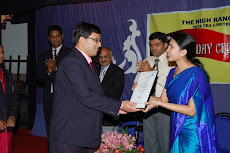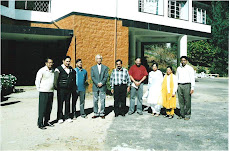 In 2001, when Jim Collins went to identify what great CEOs do that others don’t (for his book Good to Great: Why Some Companies Make the Leap ... and Others Don’t), he began by asking, “Why?” Why were these companies great and how did they get that way? As we started our research, we became convinced that we could use the same approach Collins used in order to gain insight into the characteristics and behaviors of our very best principals. We discovered that outstanding principals represent a wide range of personalities, and at the same time exhibit a solid core of leadership qualities and characteristics that coalesce to create startling success in their schools.
In 2001, when Jim Collins went to identify what great CEOs do that others don’t (for his book Good to Great: Why Some Companies Make the Leap ... and Others Don’t), he began by asking, “Why?” Why were these companies great and how did they get that way? As we started our research, we became convinced that we could use the same approach Collins used in order to gain insight into the characteristics and behaviors of our very best principals. We discovered that outstanding principals represent a wide range of personalities, and at the same time exhibit a solid core of leadership qualities and characteristics that coalesce to create startling success in their schools.
1. First, Build Relationships
In the private sector, where making a profit is the goal, leaders are not normally required to exert extraordinary effort building relationships because they usually have the luxury of getting the right people on the bus, the wrong people off the bus, and the right people in the right seats.
Unfortunately, public education leaders do not have that luxury and must often work with a staff that they did not personally select. Student learning is the goal and people are the mechanisms for producing and sustaining student achievement. For this reason, a key prescription for principal leadership is the ability to work with people and build relationships with teachers, students, parents, and the community.
Focusing on relationships is not a gimmick for improving student test scores, but rather a means of laying the foundation for sustaining improvement over the long run. The principal’s efforts to motivate and invigorate estranged teachers and to build relationships among otherwise disengaged teachers can have a profound effect on the overall climate of the school.
2. Exercise Professional Will, But Stay Humble
While on the surface the great CEOs in Collins’s study seemed quiet and reserved, hidden within each of them was intensity, a dedication to making anything they touched the best it could possibly be.
We found evidence of this duality in every one of our highly successful principals. For example, one principal spoke very quietly. But his shy and unassuming nature was not a sign of weakness. When asked about reasons for the success of his school, he was adamant about the efforts he made. “I would hope people know that I did everything possible to support teachers in making sure students were successful at our school,” he said. “That was my Number One priority.”
Other principals exuded energetic, enthusiastic, and unreserved personalities. Still, they shared stories that revealed their humility. “The first year we created a vision and mission statement,” said one bold principal. “I had already spent a year working on my own vision. I had my rose-colored glasses on. I quickly realized we needed to spend time developing a collective school vision.”
3. Credit Others, Accept the Blame
Successful business executives talk about their companies and the contributions of others, but avoid discussion about the part they personally played. When things go well, they give credit to others; when things go badly, they accept the blame.
Similarly, highly successful principals consistently give credit to the work of teachers at their schools and take blame for decisions or programs that failed. For example, one principal we interviewed shared that some of the teachers at her school grumbled about having to implement guided reading every day. “I was pushing them too fast,” she said. “So I backed off.”
Another principal observed, “I don’t think of myself as the leader of the school. I think of myself as just one of the leaders at this school. It’s really them, not me. If they were not doing the work, the work would not be done. They are the ones in the trenches.”
4. Be Ambitious for the School’s Success First
The transformation from good to great in the private sector comes about by a snowballing process—step by step, action by action, decision by decision—until the company reaches greatness. Collins referred to this process as the “flywheel.” All of the characteristics and behaviors discussed thus far are the necessary ingredients that make up the flywheel pattern.
This process occurs in the schools of highly successful principals as well. In our interviews with these leaders, when asked what factors contributed to the success of their schools, they would reveal that success wasn’t due to a single program or event but instead was a process that evolved over time. Often the media covers the success of a school after it has made its breakthrough, giving the impression that the transformation occurred overnight. In reality, the transformative process of getting there was probably slow.
5. Resolve to Do What Needs Doing ... Then Do It!
Successful leaders identified in Collins’s study were determined to get what they wanted, when they wanted it. They adopted what Collins described as a “workmanlike diligence—more plow horse than show horse ... fanatically driven, infested with an incurable need to produce results.”
We found it easy to understand why CEOs in the private sector would be fanatically driven to produce profits, but we wondered just how school leaders would be so driven. As it turns out, all the highly successful principals in our study displayed an enduring resolve to meet the challenges of improving student learning at their schools.
For example, one principal was adamant that there be no barriers to incorporating guided reading strategies every day: “A couple of the teachers said it was a good idea but that it required too much preparation. I prepared all of the materials for them, so they had no excuse. If a teacher said, ‘This program isn’t working for me,’ I’d say, ‘Can I come in and teach it?’ I was obstinate. I just would not let them not do it.”
6. Get the Right People on board
CEOs do not need to ask permission to personally fire, demote, or reassign personnel who are not right for the organization. They just do it.
School principals do not have the same luxury, but our highly successful principals showed persistence in getting who they wanted on their staff, and in getting those teachers who did not work with their program to transfer or leave teaching. Once initial changes in staff were made, their teaching staff was very stable, with few teachers ever leaving the school. When these principals did need to hire staff, they were aggressive at finessing, politicking, and persuading to get the teachers they wanted.
7. Confront the Brutal Facts
Great leaders maintain unwavering faith that the company can and will prevail, regardless of present difficulties, and at the same time have the discipline to confront the most brutal facts of the company’s current reality. Great leaders do not fool themselves or try to sugarcoat problems.
This is also true of great school leaders. The list of challenges facing schools today is long. Some of those we read about regularly in newspapers and journals across the country include accountability and the No Child Left Behind act, the achievement gap among diverse student populations, language barriers, issues with unions and contracts, student discipline, grade inflation, and the shortage of highly qualified teachers. Teachers and principals in schools everywhere can be heard commiserating about students not doing their homework, or parents not being involved in their children’s education.
However, there is hope. Mike Schmoker, in his book Results Now (2006), encouraged readers to see the brutal facts as opportunities to “blow the lid off school attainment, dramatically and swiftly reduce the achievement gap, and enhance the ‘life chances’ of all children, regardless of their social or economic circumstances.” Principals and teachers in some schools are coming together as a collaborative team to face these challenges and do something about them.
8. Be Passionate About Your Educational Engine
There’s an ancient Greek parable that says, “The fox knows many things, but the hedgehog knows one big thing.” Collins found that the great CEOs “know what their company can do the best, what their economic engine is, and what their passion is all combined into one crystalline concept.”
For school principals, the hedgehog concept consists of knowing what teachers are best at (e.g., skill and determination), determining what drives the educational engine of the school (e.g., increasing time spent teaching reading), and then being a fanatic about driving that engine.
For example, one principal we interviewed saw his school as rich with raw material—the skill and determination of the teaching staff necessary to realize the potential of all students to be successful academically.
This principal knew what drove the educational engine of his school. He named two related factors—increasing the time teachers spend teaching reading skills, and providing more time for students to read during the school day. His staff spent more time in the school day teaching reading and giving students an opportunity to read on their own. They encouraged bright students in addition to helping students who were at risk. “We started with a school where half of the kids fell below the 20th percentile in reading,” this principal says. “Within a few years, very few scored below the 20th percentile.”
9. Build a Culture of Discipline
Most will agree that the idea of a “culture of discipline” is not new. Leadership literature is rich with support for the presence of an organizational culture that includes disciplined people and disciplined actions. Indeed, a culture of discipline encompasses all the attributes that we have examined thus far. On the one hand, a highly successful principal gives teachers the freedom to determine the best path for achieving their objectives. On the other hand, these principals say “No” to teacher proposals that fall outside of the hedgehog concept. All highly successful principals maintain a vision of improving student achievement. They are able to gather together disciplined people who are engaged in disciplined thought and who then take disciplined action to support the principal’s vision.
In business, profits are the economic engine. It is all about making money. In education, it is not as clear because we are talking about educating children, not selling a product. It would be a mistake to directly apply every insight gained from fields outside education to school leadership issues. Nonetheless, it is helpful to consider business leadership successes.
To buy online: From Good Schools to Great Schools

















